Sci-fi as a genre is hugely popular, but in my experience, there aren’t many board games that capture the thrilling possibilities of space travel the same way a movie or TV show could.
Something always seemed to be missing…until I played Eclipse: Second Dawn for the Galaxy, and my understanding of what board games can achieve within the sci-fi genre was altered entirely.
This is one of the most complex games I’ve ever played. From exploring star systems to researching new technologies and waging wars with other species, you have the power to shape the galaxy and control its ultimate destiny.
If you want to experience the interstellar adventure of a lifetime, buckle up because Eclipse: Second Dawn for the Galaxy is absolutely the game for you.
Eclipse: Second Dawn for the Galaxy: A Quick Overview
- Players: 2-6
- Recommended age: 14+
- Playing time: 60-200 minutes
Eclipse: Second Dawn for the Galaxy is an updated version of the highly popular game Eclipse, which came out in 2011. This new edition offers improved gameplay, revised graphic design, and additional components. The game lets players control an immense interstellar civilization that can be expanded and evolved through new technologies.
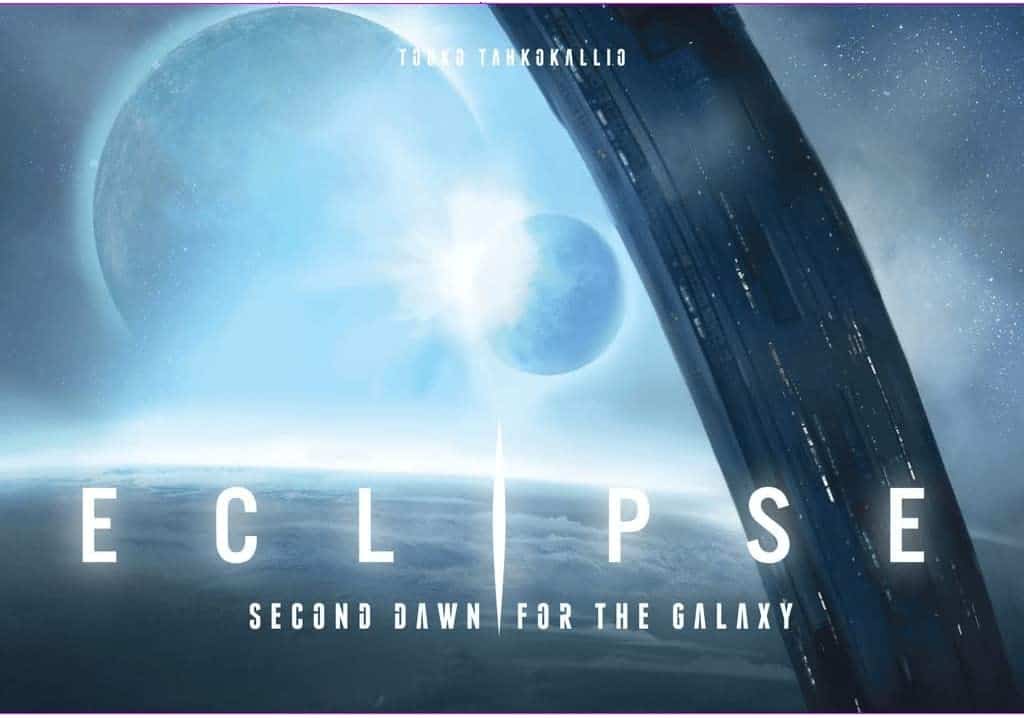
What’s New in Eclipse: Second Dawn for the Galaxy?
You can expect:
- New miniatures for GCDS, ancients, orbitals, and more
- Custom combat dice
- Custom plastic inlays
- Fine-tuned gameplay
- A complete line of Ship Pack 1 miniatures
- New graphic design
Aim of the Game
To win Eclipse: Second Dawn for the Galaxy, you need to be the player with the most victory points at the end of eight rounds.
Yes – I did just say eight rounds! This isn’t the game to choose if you’re short on time.
How to Play
Not only are there eight rounds per game, but it also takes a long time to get to grips with all the rules, so if you’re impatient like me, you might find it difficult to enjoy at first.
Still, I’d recommend persisting even when the rules seem complex because it will be worth it in the end! Here’s how to play.

Setup
Organizing the Board
Shuffle the Tech Tiles in the Tech Tile bag and draw the correct amount for the number of players (see below). Put the tiles in the Tech Tray with matching Tech and cost icons.
Place Rare Tech Tiles on the bottom row of the tray; these should not be counted against the number of regular Tech Tiles.
Shuffle the Reputation Tiles in their matching bag.
Next, shuffle the Discovery Tiles, placing them face-down near the Upgrade Tray and Tech Tray. There’s a lot of shuffling during the setup phase, that’s for sure!
Select one Blueprint Tile of each type. Place Blueprint Tiles, the Traitor Tile, and Damage Cubes next to the Tech and Upgrade Trays. Trust me, having these components close together will come in handy during the game.
The Galactic Center Sector should be placed in the middle of the table. Put a face-down Discovery Tile on the Galactic Center Sector’s Discovery symbol, with the Defense System (GCDS) miniature on top.
Shuffle each Sector hex, then put the Sectors in face-down stacks. The Start Player Tile goes to the person who has spent the least time on planet Terra in the Sol system.
Selecting Species
Starting with the person to the right of the Start Player, select a Species Board and take a Species Tray of the same color.
My favorite species is the Hydran Progress, which embraces technological progress. Make sure you read through each species description and choose carefully!
Place your Starting Sector in the zone closest to you, then fill all empty Starting Zones with randomly selected Guardian Sectors with the arrow facing GCDS.
On the Guardian symbol of each Sector, place a face-down Discovery Tile, with a Guardian miniature on top. Any unused components can be placed back in the box.
Take from your Species Tray:
- The number of Colony Ships shown on your board
- The Summary Tile, with the Action Phase Overview face-up
Place your Influence Discs on the Influence Track.
On your control board, you need to place:
- One Storage Marker of each color on your Storage Track
- One Population Cube on each square valued between three and twenty-eight of the Population Tracks
See, I wasn’t exaggerating when I told you there’s a lot of setup involved in this game. Don’t worry, though – we’re nearly done!
Move the following onto your Starting Sector:
- One Influence Disc
- One Interceptor Ship miniature
- One Population Cube in each Population Square without a star

Game Concepts
There are a lot of ideas to get your head around, so I’ll explain everything you need to know as simply as possible.
Activations and Actions
Players select and resolve Actions during each round until all players pass. Actions are made up of different Activations, varying depending on your Species and Techs.
Resources
Sectors can produce three resources: materials, science, and money. This part of the game is very similar to Catan.
You can track how much of a particular resource you have on your Storage Track.
Trade
You can trade some resources for others by paying the number indicated by the Trade Value on your Species Board.
Population Cubes
Population Cubes represent the size of your civilization. When placed in Sectors, they produce resources.
Colony Ships
You can use Colony Ships to place Population Cubes on Population Squares within your Sectors. They’re one of the most essential components you can have during the game!
Influence Discs
Influence Discs are vital reference points in what is ultimately a complex and sometimes confusing game. They show your civilization’s influence, of course, but they also mark the Sectors your civilization is in control of.
Every time you take an Action, you must move an Influence Disc from your Influence Track to the corresponding Action Space.
The furthest empty space to the right of the Influence Track shows how much money you have to pay to keep your civilization functioning.
The more Sectors you have, the more money you’ll need to keep it all going, so be careful with your spending! I used to be terrible at budgeting before this game, but you’ll quickly learn how to keep your finances in check.
Control
Having an Influence Disc in a Sector means you’re in control of it. Controlling Sectors allows you to expand your empire by producing resources and colonizing planets.
Tech
The best way to gain advantages for your civilization is, in my opinion, to research Techs. Some Techs allow you to make your civilization more efficient, while others can be used to build and upgrade ships.
Techs are split into three categories:
- Military
- Grid
- Nano
Ships
You can use ships for two things – fighting and exploring – and there are four different types available:
- Interceptors
- Starbases
- Dreadnoughts
- Cruisers
As you’d expect, bigger ships are more expensive to build, but they have more room for ship parts, making them incredibly valuable.
If you want my advice, make sure you build at least a few large ships, as they will significantly impact the strength of your position in the game.

Blueprints
All ships have blueprints indicating their specific abilities, for example, shields and weapons.
Structures
Structures are permanent colossal objects built in your controlled Sectors. Monoliths give you extra victory points at the end of the game, whereas Orbitals provide an additional Population Square.
Zones and Rings
The game board is made of different Zones. Using the Explore action, you can place Sectors within these Zones during the game.
Zones and Sectors are grouped by rings:
- Inner (I)
- Middle (II)
- Outer (III)
Sectors
Each Sector represents a star system. Within Sectors, Population Squares represent worlds producing resources.
Wormholes
Due to the considerable distance between Sectors, ships are only permitted to move using Wormholes.
Usually, Wormholes can only be used to move to, explore, or influence adjacent Sectors if the edges connecting the Tiles each contain a Wormhole.
Discovery Tiles
When you explore specific Sectors, you may be awarded a Discovery Tile.
These tiles are double-sided – the front shows some kind of reward (for example, Ancient Ship Parts or Resources), and the back shows two victory points.
Unfortunately, you can’t take advantage of both rewards. You’ll have to choose between them (very difficult if you’re indecisive like I am). Unless I need the reward at that precise moment, I always opt for the points.
Ambassador Tiles
You can use Ambassadors to forge Diplomatic Relations with other players when you play with four or more people. This increases your production and earns you victory points at the end of the game.
I love this part of Eclipse: Second Dawn for the Galaxy because it encourages people to team up (to an extent; ultimately, it’s still each player for themselves), making the game more interesting.
Reputation Tiles
When you participate in Combat, you receive Reputation Tiles worth victory points at the end of the game.
Warp Portals
The Warp Portals are made of three Sectors, one Rare Tech, one Discovery Tile, and one Warp Portal Tile. They are optional modules that make it possible to move, form Diplomatic Relations, and Influence across the game board.
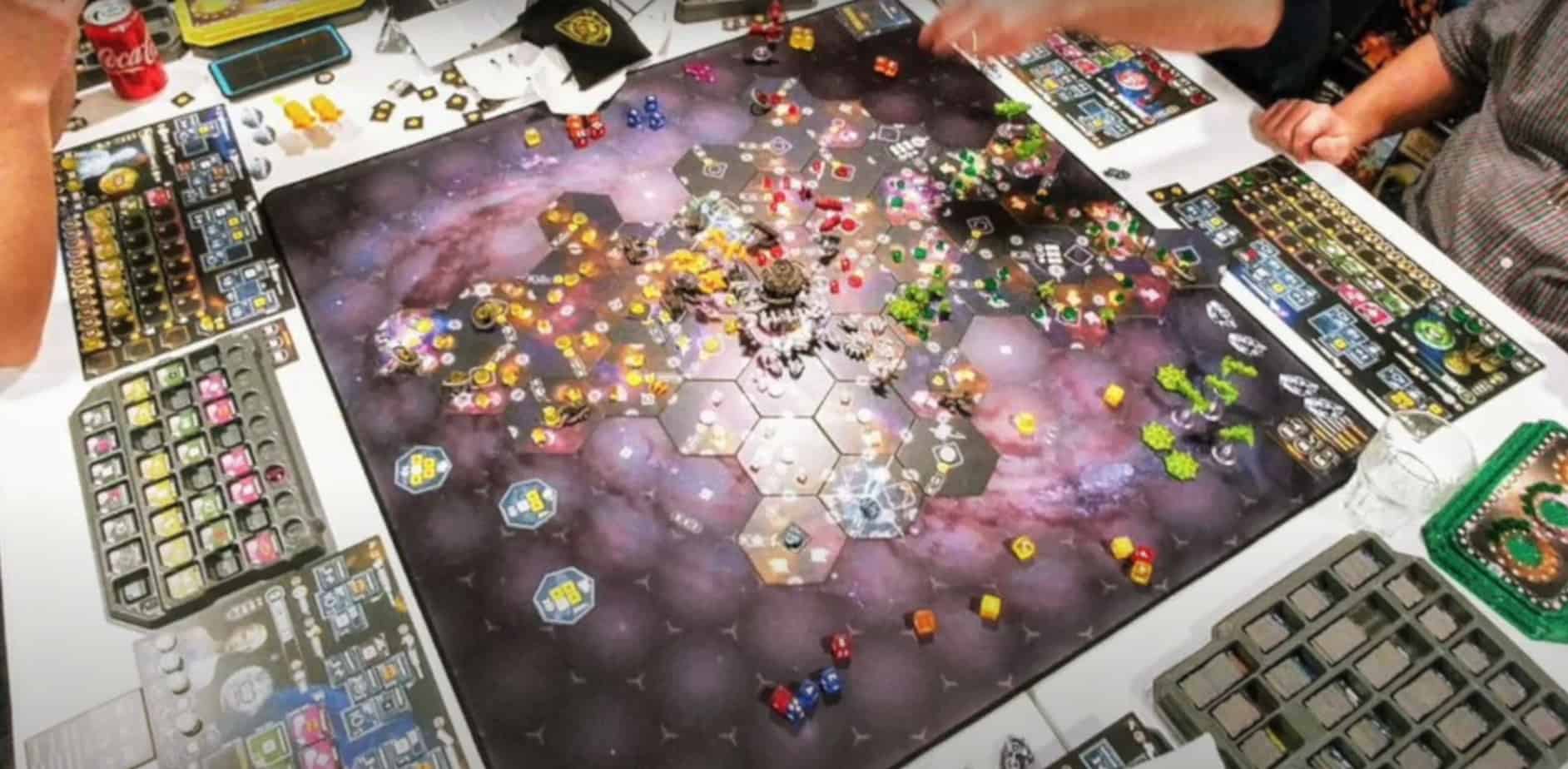
Taking a Turn
There are four phases in each game round:
- Action phase
- Combat phase
- Upkeep phase
- Cleanup phase
Action Phase
You may take one action or choose to pass. This continues until all Summary Tiles are flipped with the Reaction Overview face up.
To take action, you must move the left Influence Disc from your Influence Track to the Action Space, matching the chosen action. You can carry out the same action multiple times.
Whichever player decides to pass first receives two money and the Start Player Tile for the next round of the game. Sometimes this can be a robust tactical decision, so I’d recommend assessing all your options before deciding what to do.
After this, other players who pass may take one Reaction or Pass.
You can choose from the following actions:
- Use a Colony Ship to move a Population Cube to an empty Population Square in one of your Sectors
- Research new Techs by paying their Science costs and placing the researched Tech Tiles on your Species Board
- Upgrade a Ship’s Blueprint with new Ship Parts
- Build new Ships and Structures
- Move your Ships (to Zones that have already been explored and have Wormholes)
- Use influence to modify Control by moving Influence Discs to or from Sectors
Military technologies:
- Neutron bombs
- Starbase
- Phase shield
- Plasma cannon
- Advanced mining
- Tachyon source
- Plasma missile
- Gluon computer
Grid technologies:
- Gauss shield
- Improved hull
- Fusion source
- Positron computer
- Tachyon drive
- Advanced economy
- Quantum grid
- Antimatter cannon
Nano technologies:
- Nanorobots
- Fusion drive
- Advanced robotics
- Orbital
- Advanced labs
- Wormhole generator
- Monolith
- Artifact key
Rare technologies:
- Antimatter splitter
- Neutron absorber
- Conifold field
- Cloaking device
- Absorption shield
- Improved logistics
- Sentient hull
- Soliton cannon
- Warp portal
- Transition drive
- Flux missile
- Pico modulator
- Zero-point source
- Ancient labs
- Metasynthesis
As you can tell, the creators of Eclipse: Second Dawn for the Galaxy have gone all-out with the details of the game!

Combat Phase
This phase contains six steps:
- Determine battles – identify Sectors containing enemy Ships
- Resolve battles – by Sector Number in descending numerical order
- Attack population – Ships attack Population Cubes
- Influence sectors – take control of Uncontrolled Sectors
- Discovery Tiles – claim undefended Tiles
- Repair damage – reset Ship damage by returning Damage Cubes to the supply
To resolve Battles, you have to participate in a series of Engagement Rounds that last until all of one player’s Ships have retreated or are destroyed.
Resolving battles:
- Work out the order of the Battle resolution (players Battle two at a time in reverse order of entry into the Sector)
- The roles of Attacker and Defender are worked out in the same way (the player who controls the Sector is always the Defender)
- Determine Initiative for every Ship type
- You can fire missiles once, by Ship type
- Repeat Engagement rounds until the Battle is over
Upkeep Phase
This is the depressing part of the game where you end up losing money to pay for your Civilization without feeling like you actually gain anything from it.
It’s a bit like throwing money down the drain, but it’s also vital because this phase allows you to Produce Materials and Science Resources after you’ve paid.
During this phase, you can activate any remaining Colony Ships you have. However, you’re not allowed to use these Ships to move Population Cubes.
After this, collect your Income (yay!) and pay your Civilization Upkeep Cost (boo).
Don’t forget to adjust your Money Storage Marker to keep track of your finances!
Like Monopoly, you must avoid bankruptcy at all costs, and your Money Storage Marker must never move below zero. To prevent this, you’ll have to trade Science and/or Materials or abandon Sectors for Money to pay the cost of Upkeep.
If you don’t manage to raise enough funds to pay this cost, you’re eliminated from the game. That’s why it’s so important to keep a close eye on your finances at all times (something I’m terrible at in real life).
Cleanup Phase
This is the final phase of the round. Check the indicated number of Tech Tiles for your player count and draw them from the Tech Tile Bag, placing them on the Tech Tray.
Rare Tech Tiles don’t count during this phase, sadly.
Move Influence Discs from your Action Track to your Influence Tracks, then move Population Cubes from your Graveyard to their correct Population Tracks.
The last step is to flip your Colony Ships and Summary Tile face-up, moving the Round Marker one step forward on the Tech Tray.
Finally, a new round begins. While this structure makes the game lengthy, this is a good thing – at least in my opinion – because it allows you to learn and improve your skills each round. By the end of your first game, I promise you’ll feel more confident!
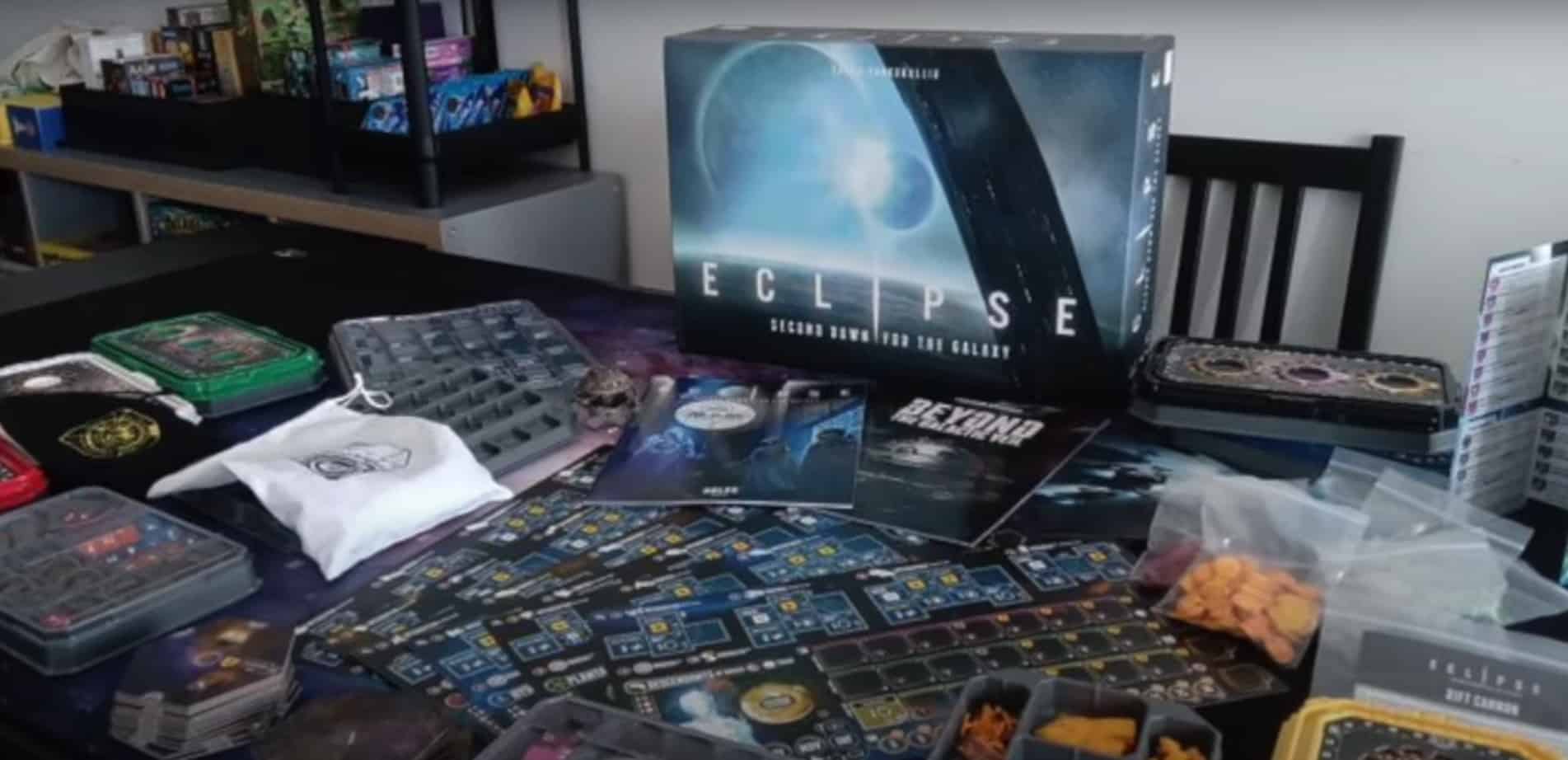
End of the Game
The game concludes after eight rounds have been played. The person with the most victory points wins!
If there is a tie, the player with the most Resources in their Storage takes the crown.
Don’t forget, you can gain victory points from:
- Ambassador Tiles (1 VP per tile)
- Reputation Tiles (1-4 VP per tile)
- Controlled Sectors (1-4 VP per Sector)
- Monoliths (3 VP per Monolith)
- Discovery Tiles (2 VP per tile)
- Traitor Tile (-2 VP)
- Progress on each Tech Track (4 Tech Tiles on track = 1 VP; 5 tiles = 2 VP; 6 tiles = 3 VP; and 7 tiles = 5 VP)
How Many Pieces Are There in Eclipse: Second Dawn for the Galaxy?
I can honestly say I’ve never encountered a game with so many components. I think Eclipse: Second Dawn for the Galaxy is epic, but I find it frustrating to keep track of and arrange so many pieces.
The game contains these components:
- 6x Species Tray
- 1x Base Tray
- 6x Control Boards
- 12x Orbitals
- 10x Monoliths
- 1x GCDS
- 4x Guardians
- 14x Ancients
- 33x Population Cubes (in 6 colors)
- 16x Influence Discs (in 6 colors)
- 3x Ambassador Tiles (in 6 colors)
- 4x Starbases (in 6 colors)
- 2x Dreadnoughts (in 6 colors)
- 4x Cruisers (in 6 colors)
- 8x Interceptors (in 6 colors)
- 43x Sector Hexes
- 1x Galactic Center Sector Hex
- 6x Starting Sector Hex
- 4x Guardian Sector Hex
- 6x Species Board
- 1x Tech Tray
- 1x Upgrade Tray
- 2x Table Trays
- 2x Ancient Blueprint Tiles
- 2x GCDS Blueprint Tiles
- 2x Guardian Blueprint Tiles
- 24x Colony Ship Tiles
- 36x Discovery Tiles
- 282x Ship Part Tiles
- 114x Tech Tiles
- 33x Reputation Tiles
- 10x Orbital/Monolith Tiles
- 1x Start Player Tile
- 6x Summary Tiles
- 1x Traitor Tile
- 4x Info Tiles
- 24x Dice
- 18x Storage Markers
- 12x Damage Cubes
- 1x Round Marker
- 2x Bags

Alternatives to Eclipse: Second Dawn for the Galaxy
If you like the sound of this game, here are some others I’d recommend.
Star Wars Legion
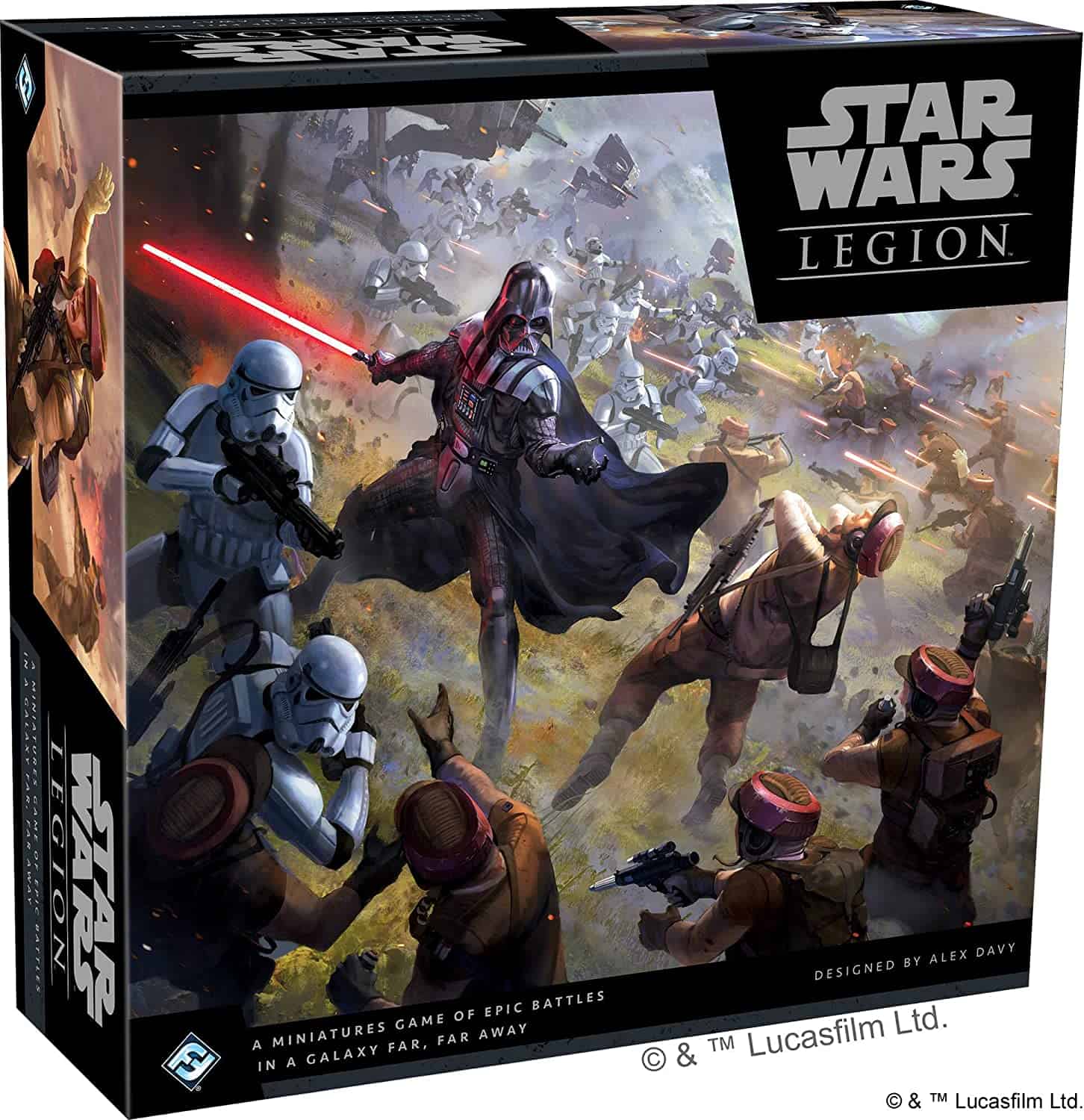
Star Wars Legion is a tabletop miniature board game that focuses on the Galactic Civil War. You will become the commander of a powerful army, including iconic characters like Luke Skywalker.
Check out our Star Wars Legion guide to find out more.
- Players: 2
- Recommended age: 14+
- Playing time: 60-120 minutes
Specter Ops
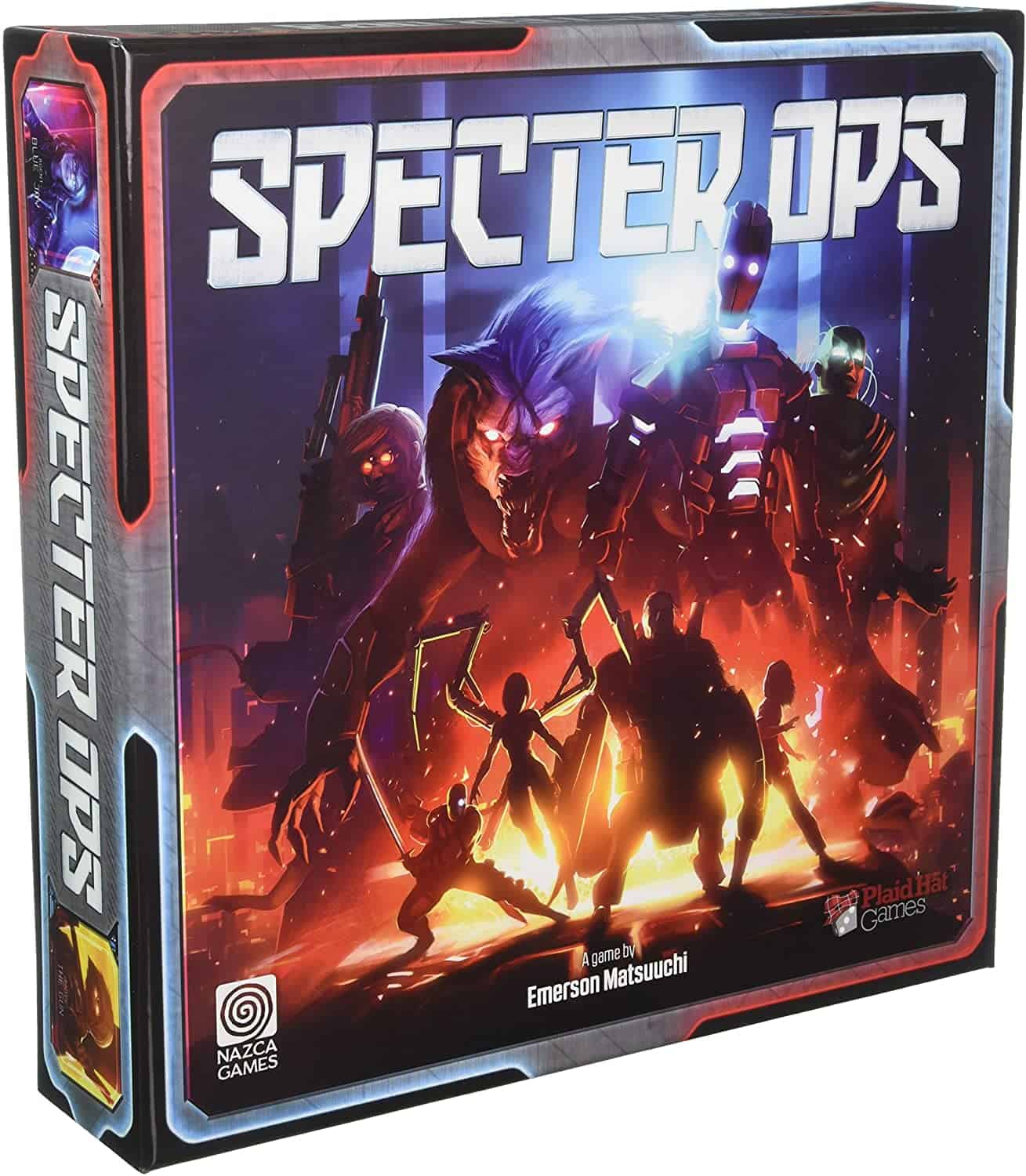
Specter Ops is another epic sci-fi game focusing on the idea of stealth and hidden movement. I love that you never know who the enemy is; this game is packed with tension!
Find out everything you need to know in our Specter Ops guide.
- Players: 2-5
- Recommended age: 13+
- Playing time: 60-120 minutes
Star Trek Catan

I love Star Trek and Catan, so you can imagine my excitement when I discovered that a crossover board game exists! Star Trek Catan shares many similarities with Eclipse: Second Dawn for the Galaxy, except it contains fewer components and is way easier to learn.
You can learn more in our Star Trek Catan guide.
- Players: 3-4
- Recommended age: 10+
- Playing time: 75 minutes
Frequently Asked Questions
Question: What alien species can I choose from in Eclipse: Second Dawn for the Galaxy?
Answer: You can choose from:
• Eridani Empire
• Hydran Progress
• Planta
• Descendants of Draco
• Mechenema
• Orion Hegemony
Question: Is Eclipse: Second Dawn for the Galaxy a family game?
Answer: I wouldn’t recommend this game to families. It has too many components to keep track of, takes a long time to set up, and is challenging to learn.
Instead, you should read our guide to the best family games.
Question: Is Eclipse: Second Dawn for the Galaxy a good strategy game?
Answer: Yes, for sure! The game’s complexity means there’s plenty of scope for developing strategies. This comes more naturally the more you play; the rules can be overwhelming at first!
We also have a guide to the best strategy board games if you’re interested in finding more alternatives.
Question: What Terran factions are there?
Answer:
• Terran Union
• Terran Republic
• Terran Federation
• Terran Directorate
Question: How are Sectors arranged in Eclipse: Second Dawn for the Galaxy?
Answer: Starting Sectors are numbered 221-232; Inner Sectors are numbered 101-110; Middle Sectors are numbered 201-211, 214, 281; Outer Sectors are numbered 301-318, 381-382; Guardian Sectors are numbered 271-274; the Galactic Center is 001.
Recommended Reads:
- Stratego Pieces Explained – Must-Know Facts - February 28, 2023
- Wahoo Board Game Guide – AKA Aggravation Guide - February 22, 2023
- Pokemon Monopoly Guide - February 22, 2023

